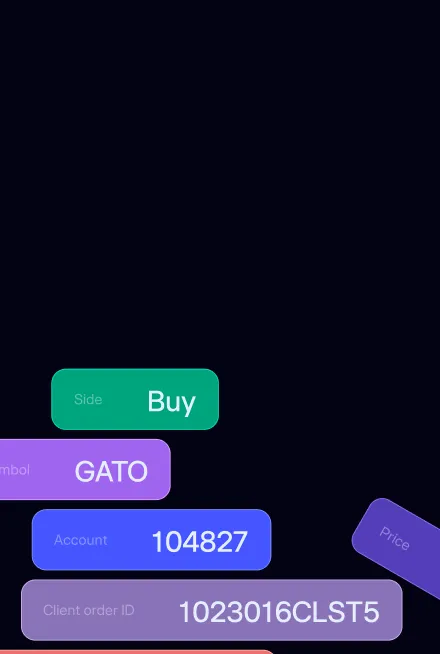Modern Infrastructure to Power T+1 Settlement
Against a backdrop of changes to market structure and operations, the importance of an upcoming move to T+1 stands out. This move faces the challenge of legacy and fragmented technology, entrenched manual processes, and siloed data — as well as capital markets that operate globally and across products.
Whether the SEC decides on a 2024 or 2025 implementation date, moving equities to T+1 settlement is gaining traction in the U.S. and other regions. Market participants of all stripes increasingly see the risk, capital, and cost reduction as outweighing the challenges of this transition.
In the U.S., the sell side (SIFMA) and the buy side (ICI) are leading the industry initiative to move to T+1 in conjunction with the DTCC. The recently published SIFMA playbook provides a wealth of detailed information on the move. The current plan, sparked in part by the meme stock mania of 2021, is a natural progression as markets modernize (i).
Faster settlement is a win for nearly all market participants, but it is also a major undertaking, as it expedites numerous processes. T+1 will touch nearly every aspect of the front, middle, and back offices. Given the high cost of transition, the industry wants to ensure that they will get fee, margin, and/or capital relief as a result of this undertaking. Much of the industry is not ready for the change from a process and technology perspective.
Assuming that T+1 will be implemented before 2025, it will mean that over the last 30 years, the U.S. equities settlement cycle has compressed from T+5 to T+3 in 1995, T+3 to T+2 in 2017, and T+2 to T+1 in 2024. Each of these moves come on the backs of the herculean effort of modernization that occurred in the preceding move, with much of the technology debt and baggage that made it through that transition — and this will be no different.

The industry still leverages antiquated technology that will bring the mainframe batch cycle times in the compressed settlement cycle into question. Moreover, workflows will need to be reconsidered to allow the move to T+1 (i).
Past performance does not guarantee future success
The move from T+2, instituted in 2017, required years of planning to align the many moving parts, the manual processes, and the workflows, and it required an extreme refreshing of the then current technology. Given the nature of the legacy technologies involved, and the massive changes across operations, systems, and people in the interim, the transition took half a decade from initial analysis to the actual dropping of settlement times. The 2017 settlement compression offered lessons for the reduction that is in play with the move to T+1.
Is it worth all the fuss?
Despite the efforts, the accelerated settlement cycle is estimated to have created efficiencies of billions of dollars in margin relief (ii). The shorter settlement reduced market, counterparty, operational, and credit risk. According to the DTCC, removing one day of settlement decreases the volatility component of CCP margin by 41% (ii).
This time?
Even with the relatively recent transition in U.S. settlement time on the minds of the industry, the T+1 transition will require years of planning — and an accelerated timeline comes up against current practices. Moreover, there is the matter of lingering legacy technology that survived the last transition, which has not gotten any newer in the last five years.
T+?
Some of the bigger challenges of the transition include time zones as well as disparate settlement regimes globally. On the European side, AFME wrote recently that it desires to join this path but is concerned by the process challenges that will be a byproduct of T+1. AFME is working on convening an industry group to consider the move to create a more global framework (iii).
The reality is, as firms employ modern infrastructure to replace legacy technology, automate processes, and de-silo fragmented data, there will be the opportunity to continue to optimize settlement cycles to the needs to drive value creation, lower costs, and minimize risks. This will continue to make markets safer and more efficient. With this move and the corresponding infrastructure upgrade it is conceivable that we will see moves to T + 0 in the relatively near future (iv).
Prepared for T+1
Clear Street is building the platform that reimagines the legacy workflows and silos that are essential to increasing access in the financial markets, all while transparently decreasing risks and costs. Our cloud native clearing, settlement, and custody stack can work in various settlement regimes. We feel well positioned to navigate the move to T+1 and welcome the industry efforts to increase the effectiveness of the U.S. equity markets.
References
i) SIFMAT+1 Securities Settlement Industry Playbook
ii) According to Advancing Together: Leading the Industry to Accelerated Settlement, published by the DTCC, risk model simulations have shown that the Volatility component of NSCC’s margin could potentially be reduced by 41% by moving to T+1
iii) Europe moved to T+2 in 2014, 3 years before the U.S. did in 2017.
iv) According to Securities Services Evolution, published by Citi Securities Services, 16% of institutional participants surveyed expect that the prevailing settlement timeframe for equities, in five years time, will be T+0
Get in touch with our team
Contact usClear Street does not provide investment, legal, regulatory, tax, or compliance advice. Consult professionals in these fields to address your specific circumstances. These materials are: (i) solely an overview of Clear Street’s products and services; (ii) provided for informational purposes only; and (iii) subject to change without notice or obligation to replace any information contained therein. Products and services are offered by Clear Street LLC as a Broker Dealer member FINRA and SIPC and a Futures Commission Merchant registered with the CFTC and member of NFA. Additional information about Clear Street is available on FINRA BrokerCheck, including its Customer Relationship Summary and NFA BASIC | NFA (futures.org). Copyright © 2024 Clear Street LLC. All rights reserved. Clear Street and the Shield Logo are Registered Trademarks of Clear Street LLC





